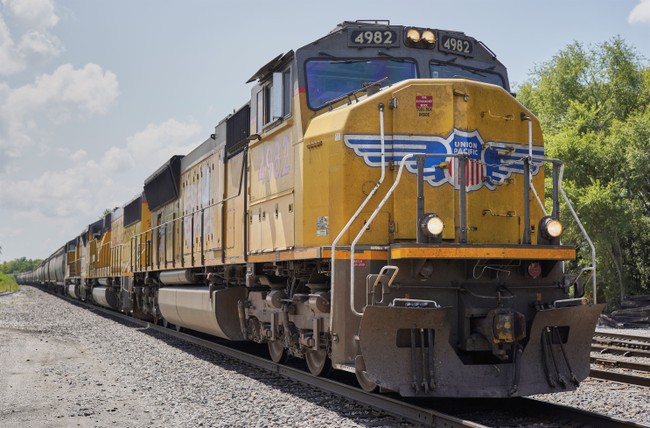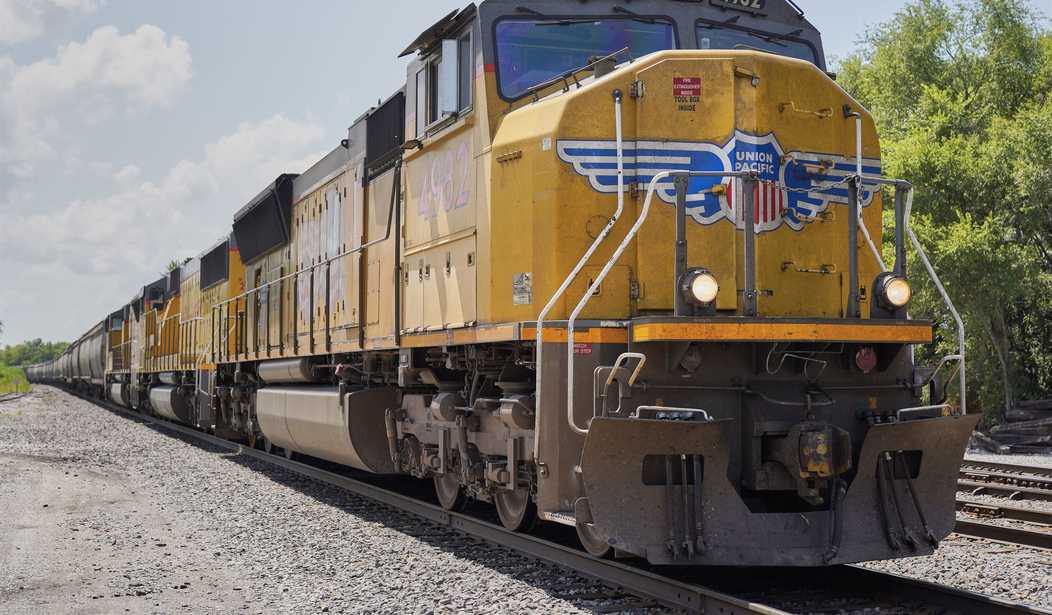Americans ought to demand that their institutions think long and hard before they attempt to interfere in business transactions at any level for any reason. But the proposed merger between Union Pacific and Norfolk Southern could be one of those occasions.
On the surface, this may seem like a win-win for Americans. A video on Union Pacific’s website says the merger would create the first transcontinental railroad, which middle-school history teachers across the country would find to be an odd claim – especially given that Union Pacific was itself part of the actual first intercontinental railroad. It was the UP track that joined up with Central Pacific track in Promontory Summit, Utah, on May 10, 1869, to create the actual first Intercontinental Railroad.
But what became of that idea? Why is Union Pacific back 156 years later, trying to create a new “first intercontinental railroad?” Why, after joining up with a railroad that connected to the East Coast rail network, did UP not pursue owning a nationwide network for more than a century and a half? Why are they now desperate to merge with Norfolk Southern and its Eastern/Mid-Atlantic routes?
UP says the new network would include 50,000 route miles across 43 states and that it would link 100 ports, shipping steel from Pittsburgh to California, tomato paste from California to Ohio, lumber from the Pacific Northwest, plastics from the Gulf Coast, copper from Arizona and Utah and soda ash from Wyoming. It says this would transform the US supply chain, create new sources of economic growth and preserve union jobs.
On closer inspection, those claims may be as reliable as Union Pacific’s history lesson about the first Intercontinental Railroad. For one thing, copper from Arizona and Utah, lumber from the Pacific Northwest, plastics from the Gulf Coast and tomato paste from California keep winding up all over the country now, thanks to the amazing transcontinental rail network already in place.
UP cites as a benefit that handing off freight from one carrier to another, as happens commonly now, would be largely eliminated if this deal goes through, but does that outweigh the competitive benefits of the deals now in place among UP, Norfolk Southern, Burlington Northern Santa Fe and CSX – which keep efficiency high and costs for shippers low?
And a merger that bills itself as a step toward efficiency is unlikely to preserve all the union jobs now involved in UP and Norfolk Southern. And about that efficiency … the last time UP executed a huge merger – with Southern Pacific in 1994 – it actually lost 12% of its traffic over the next 20 years.
In fact, it’s hard to see any new benefit deriving from this measure. Rail freight moves from coast to coast in about five days now, and nothing about this merger will improve that. No new track. No new trains. Just the existing trains all owned by one firm, with owners of the other firm paid to walk away. Given what has happened with past rail mergers, the promises of increased efficiency by acquiring another railroad with its own strengths do not seem reliable.
Divided ownership fosters competition, ensures accountability and prevents any single entity from wielding outsize power. Union Pacific and Norfolk Southern just survived a 20-year legal battle over anti-competitive behavior related to price-fixing fuel surcharges.
The other piece here is that perhaps it’s a moment for Norfolk Southern and Union Pacific to read the room. President Donald Trump is super-charging the economy with deregulation, pro-growth tax policy, such as the 100% bonus depreciation measure just approved again in the One Big Beautiful Bill, and aggressive defense of American markets through tariffs and other measures.
President Trump wants a lean and adaptive economy – not one with unduly large players colluding on prices and limiting innovation. Ask the drug companies what he has done in their industry – ordering large integrated companies to make price reductions so their large overheads won’t necessarily be able to handle them.
This is not about making all companies the perfect size for the Trump economy. But it is about whether this merger – which the parties plan to apply to the Surface Transportation Board for permission in coming weeks – makes rail service better or worse for Americans.
And this merger doesn’t create anything new. It doesn’t open any new untapped markets. It doesn’t address any pressing service or infrastructure problem. What it does is consolidate ownership, which we’ve seen before lead to higher prices, fewer workers and less growth for the railroads themselves.
People out West get upset when Washington tells them how to run their lives when they obviously know more about the issues at hand. Here’s the biggest railroad out West, trying to dictate rail market conditions on the side of the country it doesn’t understand.
Probably not a great idea. Hopefully, the STB can work with the parties for a better, more competitive solution that doesn’t chase capital out of the railroad industry.
Editor’s Note: The Schumer Shutdown is here. Rather than put the American people first, Chuck Schumer and the radical Democrats forced a government shutdown for healthcare for illegals. They own this.
Help us continue to report the truth about the Schumer Shutdown. Use promo code POTUS47 to get 74% off your VIP membership.





